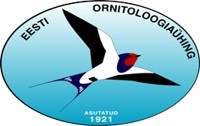Direct stream | News | Forum
Stream for mobile devices : iPhone, iPad, Windows Phone 10, VLC; Android; YouTube
For older computers: Flash player
This year the black storks arrived to their renovated nest site. The male and the female both arrived on the same day but with a short interval.
We recognize the male bird Karl from the rings on his leg and the transmitter on his back. Female Kati has no rings. The pair have tidied the nest, in other words we are waiting for the first egg in the nest.
The LK forum has described the doings in the black stork nest this year in detail.
Urmas Sellis writes in greater detail about the nest, the arrival and the whole enterprise below.
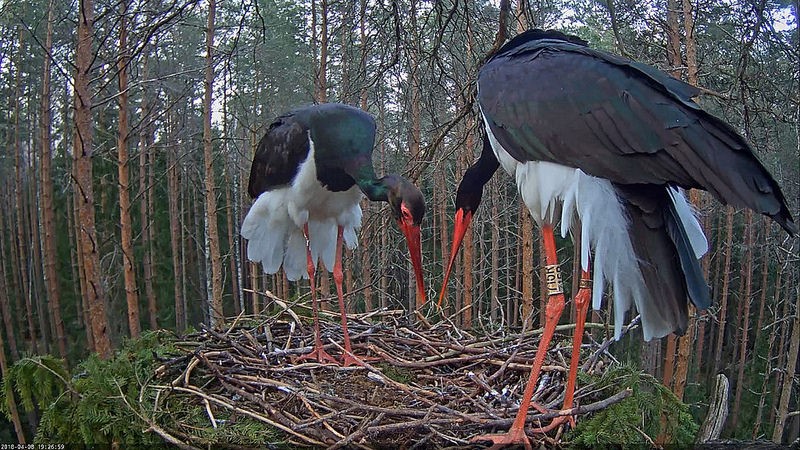
The black storks on the day of arrival.
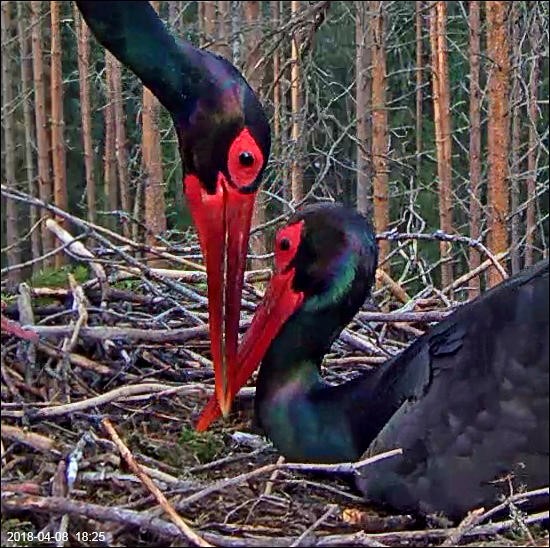
Screencap from webcam: Hagnat, LK forum.
For the third season we can follow the black stork pair nesting in the
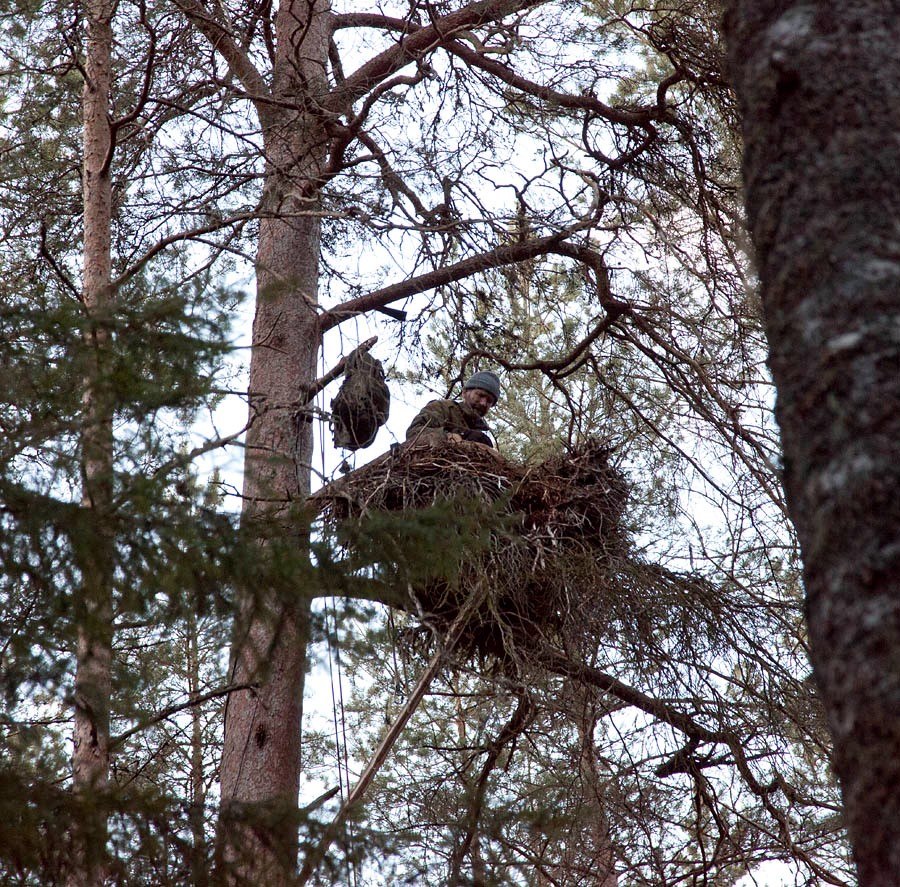
Building the artificial nest.
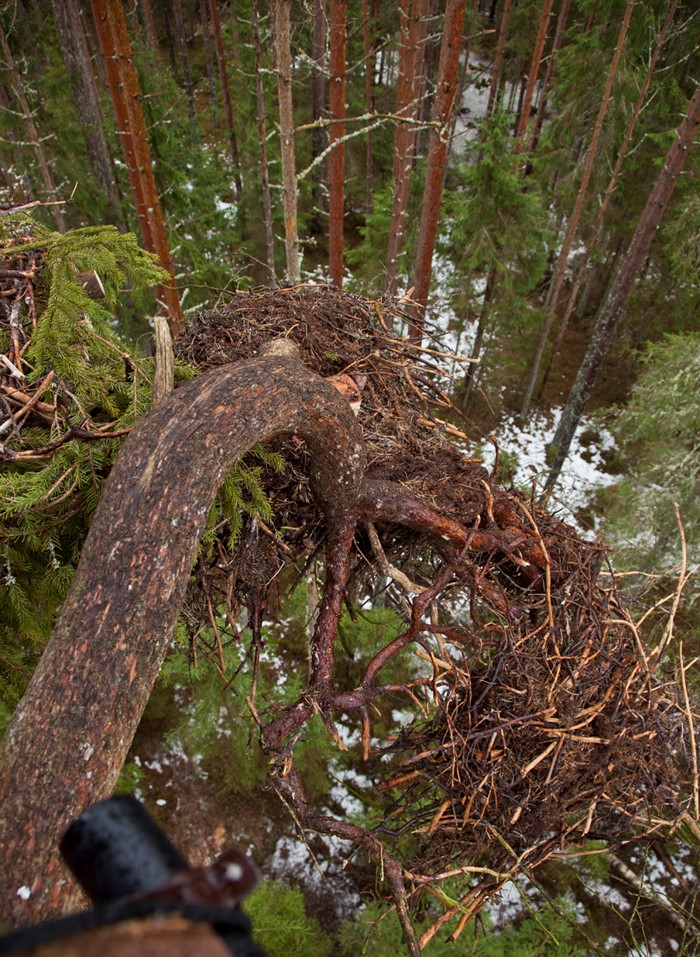
Last year’s nest had collapsed.
Probably the black storks themselves would have tried to repair the old nest but it is not certain that this would have lasted throughout the nesting period. The supporting branch for the old nest had dried and the witchbroom of branches that the nest leans on was quite deteriorated. Some materials for the new nest could be taken from the old one but we also used spruce branches and poles.
 The artificial nest andthe old natural nest, from above.
The artificial nest andthe old natural nest, from above.
The installation of the camera was done in the evening which meant that the horizon of the image from the camera had to be adjusted later. It is still not quite straight – I overdid the turning slightly..
Both adult birds arrived in the nest on April 8th 2018.
The transmission from the camera is via a Wi-Fi link from the nest site straight to the TELE2 mobile tower in Antsla, by way of two Mikrotik aerials. The signal moves on through cables to the EENet server, where the stream is created. Streaming through YouTube goes simultaneously. Different viewers prefer different formats. It is also known that some secondary streamers have used the black stork nest camera. So for instance the OK community states that for them re-transmitting the black stork nest camera in 2017 brought 4 million views. And we certainly don’t know all the re-streamers.
Using the stream from the nest elsewhere is of course not forbidden but if possible please let us know (see contacts at the end of the page or send a message to urmas(ät)kotkas.ee). “Godparents” are also welcomed to each camera because every year some components have to be replaced. For this we have no supporting project fund. Environment Investment Center has supported installation, dismantling and maintenance of the cameras. Likewise we have received some private donations to support the camera.
The camera at the nest is an AXIS F41 with a microphone built by Omar Neiland. The black stork camera is also mentioned in the AXISe 2017 annual report. We hope that our recommendations will be taken in account in the future for the development of new cameras. Always with the aim to transmit better images and sound to you.
Viewers who had followed the nest life of the Karula black storks (Kati and Karl) for two years initiated a fundraising last autumn to provide three chicks this year with transmitters so that it would be possible to follow their movements after leaving the nest too. Let us hope that the nesting will be successful and that the opportunity can be used! More information about what is happening in the nest is on the forum.
As comparison we also recommend watching black stork nest cameras in other countries
Many helpers have contributed to the realization of the black stork camera development:
Kotkaklubi (Eagle Club) – finding the nest and help at camera installation
EENet – encoding and splitting stream for viewers, technical emergency assistance, recording
Beta-Grupp – camera testing and sound tuning, microphone construction
TELE2 – mobile mast for receiver aerial, installation of aerial in mast, use of fibre optic cable
Kernel – adjustment of aerials
Ain Nurmla – help at camera installation, testing of data communication options
Looduskalender – camera home and forum on the web
Many private donors – covering unexpected costs
Thousands of viewers – who are the most important because otherwise the camera would not have so much purpose!
Participating in the enterprise:
Supporting:
